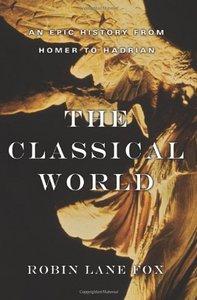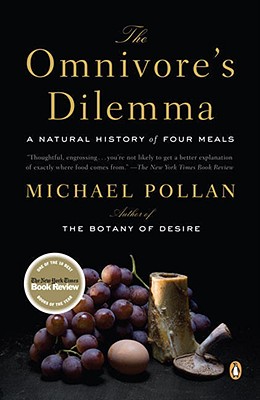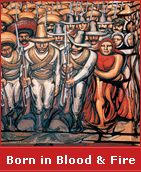If you like to go out to restaurants in Pittsburgh, you probably know the name Kevin Sousa. He’s the chef behind Salt of the Earth, arguably the best fine dining restaurant in town; he was nominated for a James Beard award this year. He also owns two other restaurant properties, Station Street Hot Dog, which is kind off by itself over on Broad Street, across the busway from the Target, by the East Liberty post office; and Union Pig and Chicken, which is on Highland Avenue, a block back from Penn Circle North. Station Street Hot Dog has been a hot dog place on and off since 1915. Likewise, Union Pig and Chicken is in a store front that has been variably occupied for as long as I’ve lived in the city, but was most recently Steel City Rib House.
I’ve been to Salt twice and it really is amazing food. Sousa put the restaurant into a formerly abandoned building in Garfield, just up Penn from Negley, several years ago. If you live in the city, you know that the Penn Avenue corridor has been slowly improving for years. Fancy lofts came to meet Sousa’s Salt, as did the upscale Mexican restaurant Verde (which is also very tasty). Penn is the dividing line between Garfield to the north and Friendship to the south, running more or less west to east up from where it divides Bloomfield to the south from Lawrenceville to the north. On the Larryville side of Penn, UPMC built the new Children’s Hospital, which has been a boon to the more westerly end of Penn. Likewise, East Liberty, which had at one time been one of the largest commercial districts in the commonwealth, but then was destroyed by terrible city planning in the 1960s, becoming a poor black neighborhood thereafter, has in recent years shaken off its blight and is now home to trendy bars and restaurants along Centre Avenue, which runs into Penn at the Target. The transformation in the neighborhood is now creeping onto Penn as well at this easterly end, which currently houses a number of predominately black businesses — and a fair number of empty store fronts. With the rehabilitation of the Highland Building into upscale apartments now underway, I don’t see how Penn Avenue can fail to go the way of Centre in this area.
So look, what’s the problem? Well, on one hand, there isn’t a problem, right? I mean, Kevin Sousa put three very good restaurants at three different price points into three empty store fronts in a somewhat blighted neighborhood. It’s hard to argue that something isn’t better for a neighborhood than nothing, and something good and popular isn’t even better than that. And though I haven’t been to Station Street yet, I can tell you that Union Pig and Chicken has some of the most delicious fried chicken I’ve ever had in my mouth, a fact I discovered on Friday when my mother and I went there for lunch.
But on the other hand, we know how gentrification works: a poor neighborhood, often a predominately black neighborhood, is down in the dumps. Working from a variety of intentions, from an honest desire to see a neighborhood get back on its feet to the cold calculation that you’ll make a killing if you get in on the ground floor of the Brooklynification of a city neighborhood, a crowd of wealthier, predominately white folks moves in and starts sprucing up the place. Except they always seem to spruce it up for themselves rather than the people who already live there — let’s be honest, it would seem that the Venn diagram of what black Americans and white Americans like to do with their disposable income does not completely overlap, which is fine, unless all of the businesses in a black neighborhood that catered to the black community get pushed out in favor of Stuff White People Like. Or, a worse scenario perhaps, or at least a more disconcerting one: where there is overlap in what black folks and white folks like, a black business providing it gets supplanted by a white business doing the same damn thing — like selling ribs and fried chicken.
Look, Sousa didn’t push Steel City Ribs out of business: its doors had been shuttered for a couple of years before he started selling his pig and chicken. And I’d never eaten at Steel City, so I couldn’t tell you how good the food was. (Sad to say, I, like a lot of people I bet, feel more interested in trying Sousa’s comfort food joint — and maybe a little more comfortable — than an anonymous black business owner’s comfort food joint.) So I don’t want to sound as if I’m blaming Sousa for the gentrification of East Liberty, or for running the black residents of the neighborhood out of town, though that is likely to happen eventually if history is a reliable guide to what happens when trendy young white people get ahold of lower class black neighborhoods. I’m just saying that Union is emblematic of something happening in East Liberty right now that’s a bit fraught. I wish improving the neighborhood would raise all boats, so to speak, but I doubt that’s going to happen. And to disclose my own small responsibility in the affair, I’m sort of happily complicit in this — I patronize the new, gentrified businesses in East Liberty a fair amount: Abay, BRGR, Kelly’s, Plum, et cetera, and now Union Pig and Chicken. I prefer having a nice neighborhood full of shit I like right nearby to having an uninviting (to me), kind-of-run down neighborhood there instead.
It is the case that the Urban Redevelopment Authority has tried to keep new housing in the area at a mixed income level, and I hope they continue in that effort. And, to go back to an earlier point, it’s fair enough that the Kevin Sousas of the world would look at an empty store front in a neighborhood that’s had some tough times and say, “I can put something good in there and make this whole block better” — that’s not a bad inclination, nor one I’m trying to fault him or anyone else for.
I’m just saying the whole thing’s sort of fraught, OK?
For what it’s worth, here’s the restaurant review. The atmosphere of Union Pig and Chicken is almost satirically spot on to what a fancy version of a Southern/soul food restaurant should be: unfinished wooden boards make the walls, wooden tables and benches make the seating, and there is a single head-high slit in the back wall allowing the staff to see the customers without being so exposed as to interrupt the New Northeast Picnic feeling of it all; they play bluegrass on the stereo. There are three yummy sauces at every table setting, a BBQ sauce, a hot sauce, and a vinegar sauce. Half a fried chicken is $11, and it is absolutely delicious. Seriously, I want more of this chicken in my mouth, though next time I go back, I feel I should try something else, like the ribs or the pork shoulder — I also hear great things about the brisket. The sides don’t come with, and are $3-$5 apiece. I had the mac and cheese, and frankly, though it was absolutely fine, I was expecting more from Kevin Sousa mac and cheese. Mom got the potato salad and thought the same thing. Next time I’ll try the greens. I also got a fancy lemonade, which had lemonade, mango, vanilla, and rose in it, and it was very good. They have a nice cocktail list that I avoided because I was already suffering from a hangover, but I would definitely try a whiskey drink when next I’m there. So, anyway, there you have it. I’ll totally go back.
I’ll just feel a little fraught about it.



 Eleventy weeks ago, I started reading
Eleventy weeks ago, I started reading  The problem, here, is that I have not spent two weeks with The Classical World, I have spent eleventy, or thereabouts, and am still not half-way through. On the other hand, drained by continuing efforts to read the book, I picked up Michael Pollan’s
The problem, here, is that I have not spent two weeks with The Classical World, I have spent eleventy, or thereabouts, and am still not half-way through. On the other hand, drained by continuing efforts to read the book, I picked up Michael Pollan’s  By the way, if you’re looking for a good one-book history of Latin America, allow me to recommend
By the way, if you’re looking for a good one-book history of Latin America, allow me to recommend